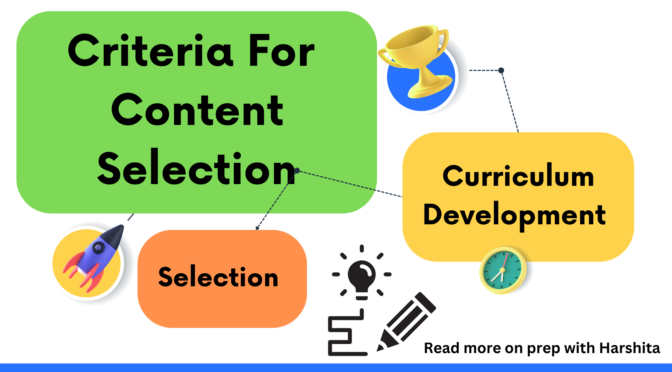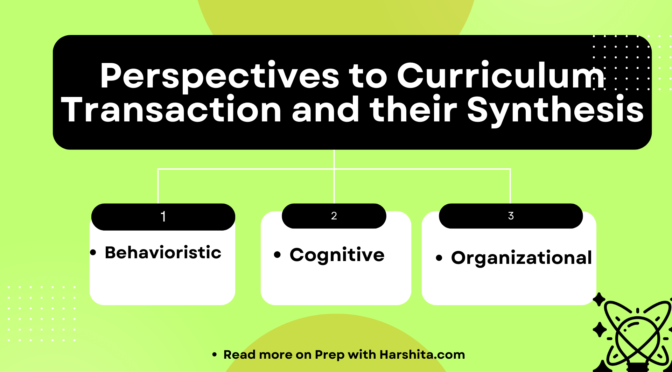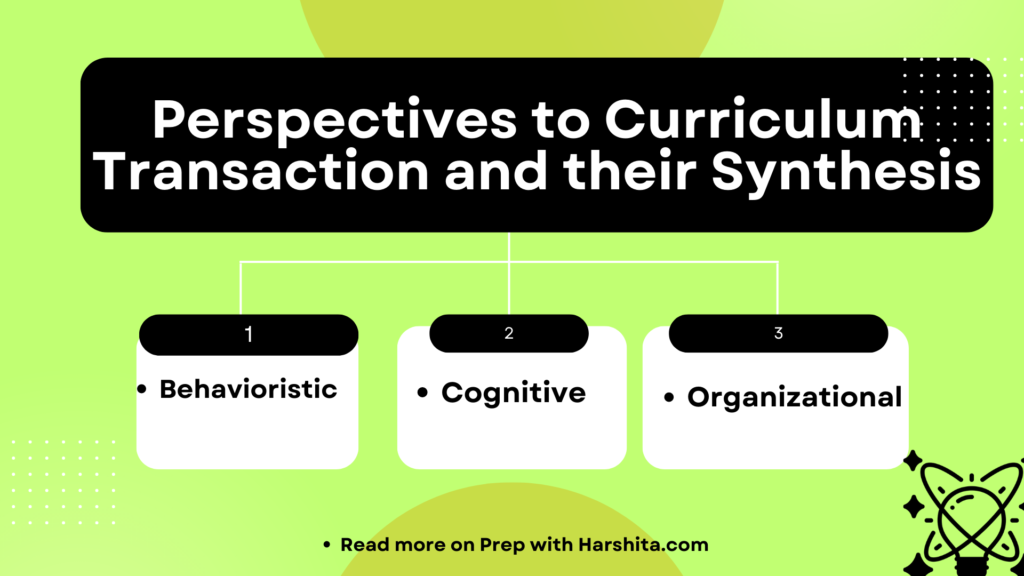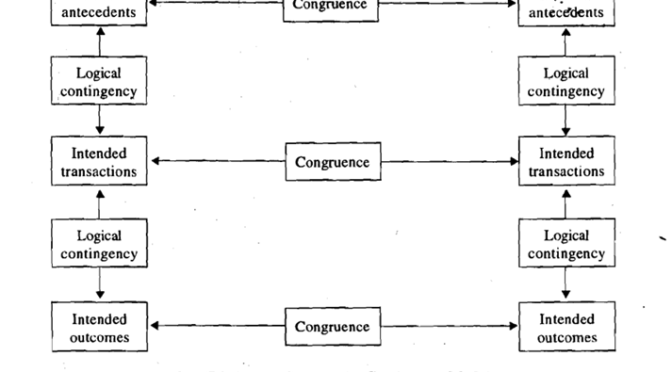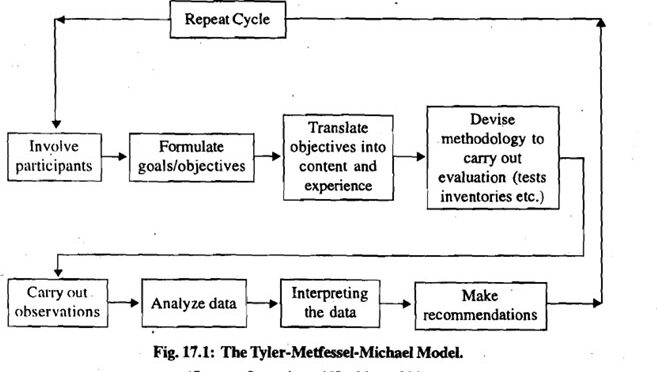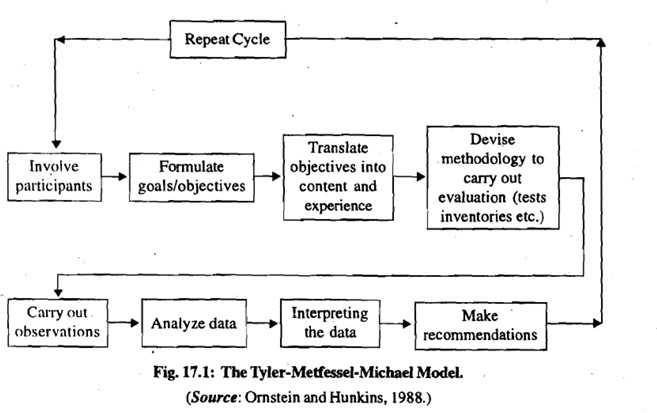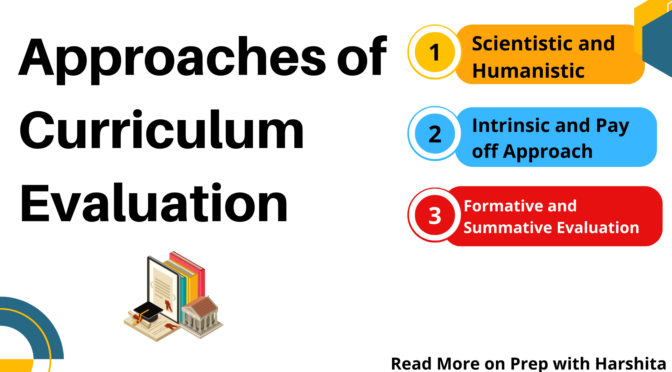When selecting content for a curriculum, there are several criteria for content selection that should be considered to ensure that the content is relevant, appropriate, and engaging for the students.
The following are some of the common criteria for content selection in the curriculum:
Self-sufficiency: This criteria helps the students to attain maximum self-sufficiency and that too in the most economical manner i.e., economy of teaching efforts, students’ efforts. In other words, we can say that the content should help the student become self-reliant and self-sufficient.
Significance: The content to be learned should be significant in terms of its contributions to the basic ideas, concepts, etc., in particular learning abilities.
Validity: Validity relates to the authenticity of the content selected. The content selected should be valid to the extent that it flows from and supports the goals and objectives of the curriculum. The content should be usable in day-to-day life.
Interest: Another deciding factor for content selection is that the content should suit the personality (e.g. attitude, interest, etc.) and intellectual capabilities (e.g. mental level, aptitude, etc.) of the students. It is likely that the students, interests are transitory. The criterion should be weighed and adjusted to provide for the student’s maturity, prior knowledge, experience, etc.
Utility: The utility criterion is concerned with the usefulness of the content. The usefulness can be interpreted in different ways. For example, the content learned by the student should be useful in higher job situations.
Learnability: This criterion relates to the optimal placement and appropriate organization and sequencing of content. The selected content should not be out of the range of students’ experiences, intellectual abilities, etc. In other words, the content should be such that it can be percieved, understood, and assimilated by the learners for whom it is intended.
Feasibility: Feasibility as a criterion of content selection compels curriculum planners to analyze and examine the content in light of the time and resources available to the student, costs involved, contemporary socio-political climate, etc. Despite the fact that there are several options available, the students do have limitations as far as the pace of their learning is concerned.
Also Read: Prep with Harshita

Also Read: Perspective to Curriculum Transaction

